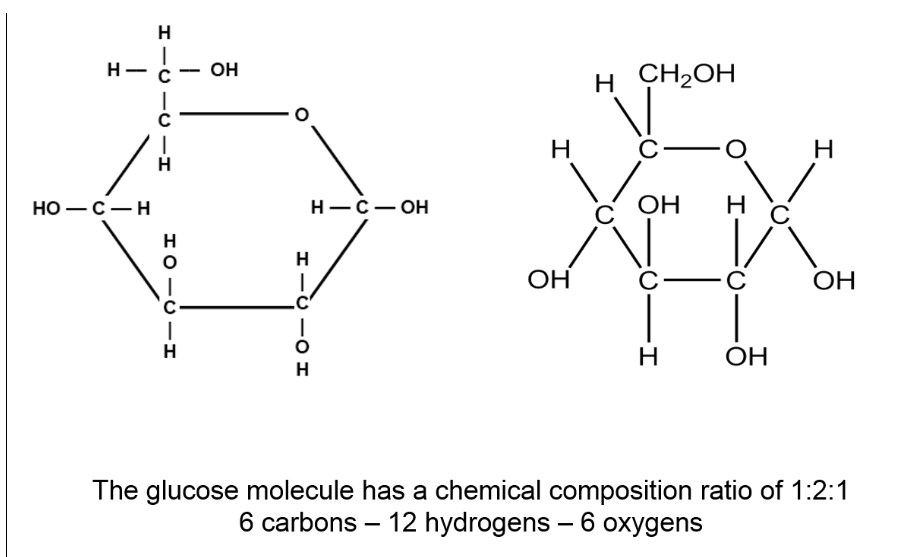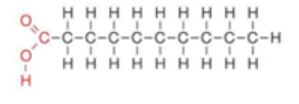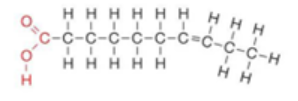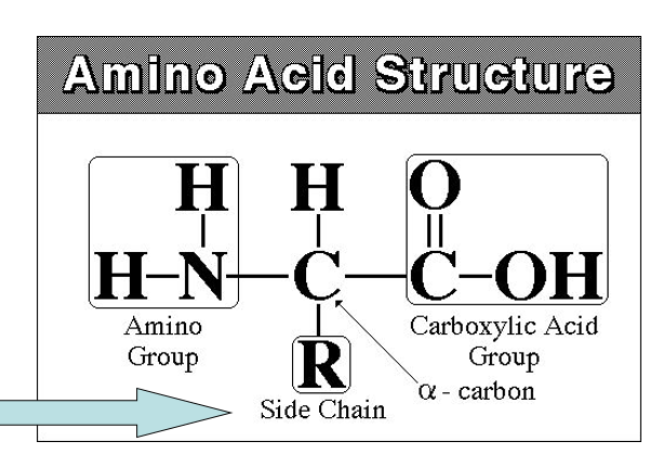sports science- topic 3: energy systems
1/73
There's no tags or description
Looks like no tags are added yet.
Name | Mastery | Learn | Test | Matching | Spaced |
|---|
No study sessions yet.
74 Terms
3.1.1: List the macro and micro nutrients - Macronutrients
Carbohydrates, Lipids, Protein and Water
3.1.1: List the macro and micro nutrients - Micronutrients
Fibres, Minerals, Vitamins
3.1.2: Outline the functions of macro and micronutrients - Carbohydrates
Primary fuel source
Energy storage
DNA
RNA
3.1.2: Outline the functions of macro and micronutrients - Food sources of carbohydrates
Fruit, vegetables, root vegetables, dairy products, cereals, legumes (pulses)
3.1.2: Outline the functions of macro and micronutrients - Lipids
Energy storage
Cell membrane
Hormones
Precursor of bile acid (critical absorption and digestion of fats)
3.1.2: Outline the functions of macro and micronutrients - Food sources of lipids
Meat, milk, dairy products, eggs, fish oil, vegetable seeds, nuts, oils
3.1.2: Outline the functions of macro and micronutrients - Protein
Promotes growth and repair of muscle tissue
Structure, transport, enzymes, protection
3.1.2: Outline the functions of macro and micronutrients - Food sources of protein
meat, milk, fish, dairy products, eggs, legumes
3.1.2: Outline the functions of macro and micronutrients - Water
medium for chemical and metabolic reactions
transporting nutrients and waste products (excretion)
Thermoregulation
Helps maintain blood pressure
Lubrication
3.1.2: Outline the functions of macro and micronutrients - Food sources of water
Beverages, fruit, vegetables
3.1.2: Outline the functions of macro and micronutrients - Fibre
crucial in digestive health, bowel movements, improve cholesterol and blood sugar levels
3.1.2: Outline the functions of macro and micronutrients - Food sources of fibre
legumes, brown or wholegrain rice, nuts, root vegetables, bran based cereals, dried fruit
3.1.2: Outline the functions of macro and micronutrients - Minerals
Essential components of molecular structures that support vital processes
e.g. muscle contraction, fluid balance, energy systems, bone and teeth mineralisation, blood oxygen transport, and maintaining acid-base and cellular fluid balance.
3.1.2: Outline the functions of macro and micronutrients - Food sources of minerals
Meat, fish, milk, dairy products, salt, cereals, fruit, vegetables
e.g. calcium, magnesium, iron, zinc
3.1.2: Outline the functions of macro and micronutrients - Vitamins
Essential in small amounts for growth, development, and metabolism. They function as co-enzymes, aiding enzymes in breaking down carbohydrates, proteins, fats, and minerals
support energy release, metabolism, bone health, immune function, and eyesight.
3.1.2: Outline the functions of macro and micronutrients - Food sources of vitamins
Fruit, vegetables, fatty fish (salmon), fish oil, liver, meat
3.1.3: State the molecule composition of a glucose molecule
C6 H12 O6
glucose is a monosaccharide
3.1.4: Identify a diagram representing the basic structure of a glucose molecule

3.1.5: Explain how glucose molecules can combine to form disaccharides and polysaccharides
via the process of a condensation reaction by which a water molecule is removed as 2 monosaccharides link together
3.1.5: Explain how glucose molecules can combine to form disaccharides and polysaccharides - Disaccharides
formed when 2 glucose molecules join
3.1.5: Explain how glucose molecules can combine to form disaccharides and polysaccharides - examples of disaccharides
sucrose, maltose, lactose
3.1.5: Explain how glucose molecules can combine to form disaccharides and polysaccharides - Polysaccharides
long chains of glucose molecules
3.1.5: Explain how glucose molecules can combine to form disaccharides and polysaccharides - examples of polysaccharides
glycogen, starch, cellulose
3.1.6: State the composition of a molecule of triacylglycerol
1 glycerol, 3 fatty acids
triacylglycerol makes up most of fats digested by humans
3.1.7: Distinguish between a saturated and unsaturated fatty acid - Saturated fatty acid
have NO double bonds between individual carbon atoms of the fatty acid chain.
form straight chains that are often packed together very tightly, allowing organisms to store energy very densely
usually derived from animal produts
3.1.7: Distinguish between a saturated and unsaturated fatty acid - food sources of saturated fatty acids
meat, poultry, full-fat dairy products, tropical oils, palm oil, coconut oil
3.1.7: Distinguish between a saturated and unsaturated fatty acid - Unsaturated fatty acid
contain one or more double bonds between carbon atoms in the fatty acid chain
unsaturated fat molecules contain somewhat less energy (less kJ)
unsaturated fatty acid food usually plant based
3.1.7: Distinguish between a saturated and unsaturated fatty acid - food sources of unsaturated fatty acids
avocado, nuts, vegetable oils, soy bean, sunflower, canola and olive oils
unsaturated fats are healthier than saturated but consumption should still be limited
3.1.7: Distinguish between a saturated and unsaturated fatty acid - molecular structure of a saturated fatty acid
NO double bonds

3.1.7: Distinguish between a saturated and unsaturated fatty acid - molecular structure of an unsaturated fatty acid
contain some double bonds

3.1.8: what are protein molecules also known as?
Polypeptides
3.1.8: State the chemical composition of a protein molecule
Carbon, hydrogen, oxygen, nitrogen

3.1.9: Distinguish between an essential and non-essential amino acid - what is an amino acid?
chemical units or building blocks that make up protein
3.1.9: Distinguish between an essential and non-essential amino acid - Essential Amino Acids
cannot be synthesised by the human body and must be obtained from the diet
e.g. red meat, fish, poultry, eggs, dairy, soy, nuts, beans
3.1.9: Distinguish between an essential and non-essential amino acid - Non-essential amino acids
can be synthesised by the human body
3.1.10: Describe the current recommendations for a healthy, balanced diet - Carbohydrates
carbohydrates should make up between 55-75% of diet
3.1.10: Describe the current recommendations for a healthy, balanced diet - Lipids
lipids should make up between 15-30% of diet
3.1.10: Describe the current recommendations for a healthy, balanced diet - Protein
proteins should make up between 10-15% of diet
3.1.11: State the approximate energy per 100g of carbohydrate, lipid and protein
Carbohydrates: 1760kJ
Lipids: 4000 kJ
Protein: 1720 kJ
3.1.12: Discuss how the recommended energy distribution of the dietary macronutrients differs between endurance athletes and non-athletes - Endurance Athlete
Carbohydrates: 55-75% of diet to support prolonged exercise and replenish glycogen.
Protein: Slightly increased to support tissue repair and recovery.
Fat: Reduced to accommodate higher carbohydrate and protein intake.
Carb Needs: Vary with training load; increased on high activity days.
3.1.12: Discuss how the recommended energy distribution of the dietary macronutrients differs between endurance athletes and non-athletes - Non-endurance Athlete
Carbohydrates: 55-60% of diet.
Protein: 10-15% of diet.
Fat: No more than 30% of diet.
Balanced Diet: Supports general health without the high energy demands of endurance training.
3.2.1: Outline metabolism, anabolism, aerobic catabolism and anaerobic catabolism - Metabolism
All biochemical reactions that occur within an organism, including anabolic and catabolic reactions
3.2.1: Outline metabolism, anabolism, aerobic catabolism and anaerobic catabolism - Anabolism
energy requiring reactions whereby small molecules are built up into larger ones
3.2.1: Outline metabolism, anabolism, aerobic catabolism and anaerobic catabolism - Catabolism
chemical reactions that break down complex organic compounds into simpler ones, with the net release of energy
3.2.2: State what glycogen is and its major storage sites - Definition
Glycogen is the stored form of glucose
polysaccharide (long chains of linked glucose molecules)
3.2.2: State what glycogen is and its major storage sites - Function
short-term energy storage that can be quickly metabolised to meet a sudden need for glucose
3.2.2: State what glycogen is and its major storage sites - Storage sites
Liver (75-100g), Skeletal muscles (300-400g)
3.2.3: State the major sites of triglyceride storage - Function
storage of energy (body’s main energy reserve)
3.2.2: State the major sites of triglyceride storage - Storage sites
Adipose tissue, skeletal muscle
3.2.4: Explain the role of insulin in the formation of glycogen and the accumulation of body fat
Insulin is a hormone produced by the beta cells of the pancreas
Insulin is secreted in response to high blood sugar level
Insulin lowers the blood sugar level of the body by stimulating the uptake of glucose by the liver/muscles
Converts the excess glucose into glycogen and stores it in the liver/muscles
Insulin inhibits lipolysis (breakdown of fat) and glycogenolysis (breakdown of glucose)
Excessive glycogen that cannot be stored will be stored as adipose tissue
Insulin has a fat-sparing effect and directly stimulates accumulation of fat in adipose tissue by inhibiting the release of the fatty acids from triglycerides
Insulin secretion promote lipogensis (synthesis of fatty acids for storage of excess glucose) and then triglycerides synthesis which may lead to increase in adipose tissue (accumulation of fat) if glucose intake exceeds energy storages
3.2.5: Outline glycogenolysis and lipolysis - Glycogenolysis
Breakdown of glycogen - catabolic reaction
In the liver: glycogen stored in the liver is broken down into glucose-1-phosphate then to glucose-6-phosphate which then can be released in the blood for uptake by other cells
In the muscles: glycogen is broken down into glucose-6-phosphate and is used in glycolysis for energy production - this is where glucose is converted into pyruvate to provide immediate energy and is NOT released into the blood.
Hormones that induce glycogenolysis are glucagon (from pancreas) and adrenaline/epinephrine (from adrenal glands)
3.2.5: Outline glycogenolysis and lipolysis - Lipolysis
Breakdown of lipids (triglycerides) - catabolic reaction
Fat cells: during this process, free fatty acids are released into the bloodstream and circulate throughout the body
Triglycerides undergo lipolysis (hydrolysis by lipases - adding water) and are broken down into glycerol and fatty acids
Hormones that induce lipolysis include adrenaline (epinephrine) and glucagon
Lipolysis promotes the conversion of non-carbohydrate sources into glucose for the muscle
3.2.6: Outline the functions of glucagon and adrenaline during fasting and exercise
During fasting and exercise:
low blood glucose as muscles increase uptake due to stimulus of exercise
blood flow is increased which delivers insulin and glucose to muscles
stimulates an increase of glucagon and adrenaline
stimulates glycogenolysis
glucagon (released by alpha cells in the pancreas) causes release of glucose from glycogen stores in the liver and skeletal muscle
stimuates lipolysis
both glucagon and adrenaline mobilise fat stores from the body’s adipose tissues for breakdown into energy
3.2.6: what is glucagon?
enzyme that helps break down glycogen
released from alpha cells in the pancreas due to low blood sugar
stimulates the breakdown of glycogen into glucose in the blood
3.2.7: Explain the role of insulin and muscle contraction on glucose uptake during exercise
both insulin and muscle contraction stimulate glucose uptake from the blood into skeletal muscle.
insulin is secreted in response to high blood sugar levels and lowers blood sugar by facilitating glucose transport into cells.
during exercise, insulin output from the pancreas decreases.
exercise increases blood flow, enhancing the effectiveness of insulin receptors on muscle cells, making glucose uptake more efficient.
lower insulin levels during exercise stimulate the liver to release stored glycogen/glucose, maintaining blood glucose levels.
exercise increases the body’s sensitivity to insulin, reducing the need for high insulin levels to transport glucose into muscle cells.
3.3.1: Annotate a diagram of the ultrastructure of a generalised animal cell
3.3.1: Animal cell - nucleus function
contains chromosomes made up of DNA and protein
brain of the cell
3.3.1: Animal cell - ribosomes function
a cell structure that makes protein
freely floating in the cell
3.3.1: Animal cell - endoplasmic reticulum function
manufacturing and packaging system
smooth endoplasmic reticulum: important in the storage of lipids and steroids
rough endoplasmic reticulum: has ribosomes attached to its surface
3.3.1: Animal cell - golgi apparatus function
processes and bundles macromolecules like proteins and lipids
post office inside the cell as it modifies, sorts and packages proteins to be secreted
3.3.1: Animal cell - lysosomes function
secretes waste - garbage disposals
3.3.1: Animal cell - mitochondrion function
responsible for cellular respiration
powerhouse of the cell
3.3.2: Annotate a diagram of the ultrastructure of a mitochondrion
Outer membrane, cristae, matrix
3.3.2: Annotate a diagram of the ultrastructure of a mitochondrion - outer membrane function
phospholipid bilayer that has a selectively permeable membrane
allows ions, nutrient molecules, ATP and ADP to go through
3.3.2: Annotate a diagram of the ultrastructure of a mitochondrion - inner membrane
freely permeable to oxygen, carbon dioxide and water
highly complex, includes electron transport system, ATP synthesase complex and transport proteins
3.3.2: Annotate a diagram of the ultrastructure of a mitochondrion - cristae function
wrinkles and folds of the inner membrane greatly increase the total surface area of the inner membrane
allows room for the inner membrane to contain all of its complexes
3.3.2: Annotate a diagram of the ultrastructure of a mitochondrion - matrix function
contains the enzymes responsible for the citric acid cycle reaction.
3.3.3: Define the term Cell Respiration
the controlled release of energy in the form of Adenosine Triphosphate (ATP) from organic compounds in cells
process that converts food into usable chemical energy
3.3.3: what are the 3 metabolic processes that cellular respiration can be divided into?
Glycolysis (occurs in the sarcoplasm (cytoplasm of skeletal muscle cell)
The Krebs cycle (takes place in the matrix of the mitochondria)
Oxidative phosphorylation via the electron transport chain (occurs in cristae)
3.3.4: Explain how adenosine can gain and lose an electron
Adenosine Triphosphate (ATP) is the body's primary energy currency, made up of adenosine and three phosphate groups.
ATP Hydrolysis: The breakdown of ATP (by removing a phosphate group) releases energy, which can be used for muscle contraction and other bodily functions.
Energy Release: When ATP is broken down into Adenosine Diphosphate (ADP) and a free phosphate group, energy is released.
ATP Synthesis: When energy is available (from food or creatine phosphate), the body reattaches a phosphate group to ADP, converting it back to ATP.
Phosphorylation: This process of adding a phosphate group to ADP to form ATP is called phosphorylation.
ATP acts like a chemical battery, storing energy when it is not immediately needed and releasing it instantly when required by the body.
if this occurs in the presence of oxygen, it is called aerobic metabolism or oxidative phosphorylation
if this occurs without oxygen, it is called anaerobic metabolism
3.3.5: Explain the role of ATP in muscle contraction
Cellular respiration is the controlled release of energy in the form of ATP (from organic compounds in cells) through the release of a phosphate group (creating ADP) the energy released supplies the energy for the muscle contraction. No further energy can be created until ATP is resynthesised/reversed process.
In the muscle the coupling of myosin and actin, stimulates the breakdown of ATP.
ATP on the binding site of myosin breakdown ATP to ADP and release of phosphate molecule
Release of Phosphate (energy) allows the cross bridges to initiate power stroke, where they swivel towards the middle of the sarcomere. This is the pulling actin over the myosin, making the muscle shorter.
When the stimulus from the nerve stops and the muscle returns to resting state, ADP is re-joined to phosphate to reform ATP
A high-energy phosphate compound from which the muscle derives its energy/the main energy currency in muscle cells; ATP is used to transfer the chemical energy needed for metabolic reactions
3.3.6: Describe the synthesis of ATP by the ATP-CP system
ATP stored in the myosin-cross bridges is broken down to release energy for muscle contraction. This leaves the by-products from the ATP breakdown to release energy for muscle contraction. This leaves the by-products from the ATP breakdown: adenosine diphosphate and one single phosphate
Phosphocreatine is then broken down by the enzyme creatine kinase into Creatine and Pi
The energy released in the breakdown of PC allows ADP and Pi to rejoin, forming more ATP. This newly formed ATP can now be broken down to release energy to fuel activity
Enzyme ATPase assists the synthesis of new ATP rather than the breakdown.

3.3.6: Strengths and weaknesses of ATP-PC system
Weaknesses:
Duration of up to 10 seconds only and limited supply of CP
For repeated bouts of all-out effort there needs to be sufficient recovery time
Strengths:
allows ATP to gain phosphate molecule almost instantly
does not require oxygen
CP is readily available
provides energy for high intensity exercise/movement
no fatiguing by-products
CP can quickly resynthesise due to quick recovery time